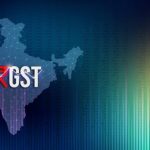The E-Way Bill is an important compliance mechanism under GST (Goods and Services Tax) in India, designed to ensure smooth movement of goods while preventing tax evasion. It is applicable to the transportation of goods exceeding ₹50,000 in value. The generation of an E-Way Bill is necessary for the movement of goods across states and even within the same state in some cases. The procedural aspects involved in generating and managing the E-Way Bill are as follows:
- When the Goods are Transported by Registered Person:
- If the goods are being transported by a registered person, whether as the consignor or recipient, the person must generate the E-Way Bill in FORM GST EWB-01. This is done on the common portal after furnishing the information required in Part B of the form. The E-Way Bill must be created for transportation by road, whether in the person’s own vehicle, a hired one, or public transport.
- Role of the Transporter:
- If the consignor or consignee has not generated the E-Way Bill, and the goods are handed over to a transporter, the registered person must provide transporter information. Based on this, the transporter generates the E-Way Bill through the common portal using the details provided in Part A of FORM GST EWB-01.
- Unregistered Person’s Role in E-Way Bill Generation:
- In cases where an unregistered person is involved, they may choose to generate the E-Way Bill themselves, either for transportation in their own or hired conveyance, or via a transporter. The process remains the same as for registered persons, with the e-way bill generated on the common portal.
- Transporter’s Responsibility for Goods Exceeding ₹50,000:
- When the consignor or consignee has not generated the E-Way Bill, and the consignment value exceeds ₹50,000, the transporter is responsible for generating the E-Way Bill in FORM GST EWB-01 for inter-state supply. This applies unless the goods are transported by railways, air, or vessels. A consolidated E-Way Bill in FORM GST EWB-02 can also be generated by the transporter before the movement of goods.
- E-Way Bill for Goods Transported via Rail, Air, or Vessel:
- In cases of goods being transported by railways, air, or vessels, the registered person, whether the supplier or recipient, must generate the E-Way Bill by providing information in Part B of FORM GST EWB-01. This should be done before or after the movement of goods begins.
- Optional E-Way Bill for Consignments Below ₹50,000:
- Registered persons and transporters may opt to generate and carry an E-Way Bill even if the value of the consignment is less than ₹50,000.
- Short-Distance Transportation Within Same State:
- If the goods are moved for a distance of up to 50 kilometers within the same state or union territory, the supplier, recipient, or transporter may skip providing conveyance details in Part B of FORM GST EWB-01.
- Change of Conveyance During Transit:
- If the goods are transferred from one conveyance to another during transit, the details of the new conveyance must be updated in the E-Way Bill on the portal before the movement continues, unless the goods are transported within 50 kilometers for delivery to the consignee.
- Consolidation of Multiple E-Way Bills:
- For multiple consignments being transported together in a single vehicle, the transporter can generate a consolidated E-Way Bill (FORM GST EWB-02) prior to the movement of goods. The serial numbers of each individual E-Way Bill must be indicated electronically.
- Communication of Acceptance/Rejection:
- The E-Way Bill details are made available to the registered supplier or recipient, depending on who generated the bill. Within 72 hours of the E-Way Bill being available on the portal, the recipient or supplier must communicate acceptance or rejection of the consignment. If no action is taken, the details are deemed accepted.







